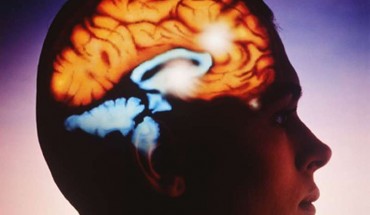During the study, participants were placed in an fMRI scanner and made altruistic decisions driven by an empathy motive (the desire to help a person for whom one feels empathy) or a reciprocity motive (the desire to reciprocate an individual’s previous kindness). Image is adapted from the University of Zurich press release.
Often, it is hard to understand why people behave the way they do, because their true motives remain hidden. Researchers at the University of Zurich have now shown how peoples’ motives can be identified as they are characterized by a specific interplay between different brain regions. They also show how empathy motives increase altruistic behavior in selfish people.
To understand human behaviors, it is crucial to understand the motives behind them. So far, there was no direct way to identify motives. Simply observing behavior or eliciting explanations from individuals for their actions will not give reliable results as motives are considered to be private and people can be unwilling to unveil, or even be unaware of, their own motives.
Psychologist and neuroscientist Grit Hein and Ernst Fehr from the Department of Economics, University of Zurich teamed up with Yosuke Morishima, Susanne Leiberg, Sunhae Sul and found that the way relevant brain regions communicate with each other is altered depending on the motives driving a specific behavioral choice. This interplay between brain regions allowed them to identify the underlying motives. These motives could not be uncovered by observing the person’s choices, or based on the brain regions that are activated during the decision-making.
Connections between brain regions linked to motives
During the study, participants were placed in an fMRI scanner and made altruistic decisions driven by an empathy motive (the desire to help a person for whom one feels empathy) or a reciprocity motive (the desire to reciprocate an individual’s previous kindness). Simply looking at the functional activity of specific regions of the brain couldn’t reveal the motive underlying the decisions. Broadly speaking, the same areas in the brain lit up in both settings. “However, using Dynamic Causal Modeling (DCM) analyses, we could investigate the interplay between these brain regions and found marked differences between empathy- based and reciprocity-based decisions”, explains Grit Hein. “The impact of the motives on the interplay between different brain regions was so fundamentally different that it could be used to classify the motive of a person with high accuracy” she continues.
Empathy motive increases altruistic behavior in selfish people
A further important result was that motives are processed differently in selfish and prosocial people. In selfish people, the empathy but not the reciprocity motive increased the number of altruistic decisions. After activating the empathy motive, selfish individual resembled persons with prosocial preferences in terms of brain connectivity and altruistic behavior. In contrast, prosocial people behaved even more altruistically after activating the reciprocity, but not the empathy motive.
Funding: The research was funded by the National Institutes of Health and the Simons Center for the Social Brain at MIT.
Source: Dr. Grit Hein – University of Zurich
Image Source: The image is adapted from the University of Zurich press release.
Original Research: Abstract for “The brain’s functional network architecture reveals human motives” by Grit Hein, Yosuke Morishima, Susanne Leiberg, Sunhae Sul, and Ernst Fehr in Science. Published online March 4 2016 doi:10.1126/science.aac7992
Abstract
The brain’s functional network architecture reveals human motives
Goal-directed human behaviors are driven by motives. Motives are, however, purely mental constructs that are not directly observable. Here, we show that the brain’s functional network architecture captures information that predicts different motives behind the same altruistic act with high accuracy. In contrast, mere activity in these regions contains no information about motives. Empathy-based altruism is primarily characterized by a positive connectivity from the anterior cingulate cortex (ACC) to the anterior insula (AI), whereas reciprocity-based altruism additionally invokes strong positive connectivity from the AI to the ACC and even stronger positive connectivity from the AI to the ventral striatum. Moreover, predominantly selfish individuals show distinct functional architectures compared to altruists, and they only increase altruistic behavior in response to empathy inductions, but not reciprocity inductions.
“The brain’s functional network architecture reveals human motives” by Grit Hein, Yosuke Morishima, Susanne Leiberg, Sunhae Sul, and Ernst Fehr in Science. Published online March 4 2016 doi:10.1126/science.aac7992




